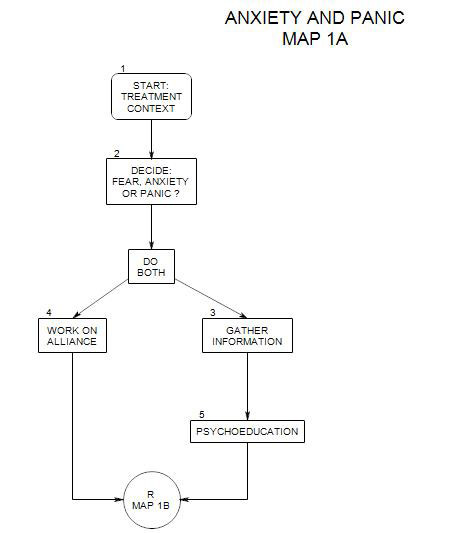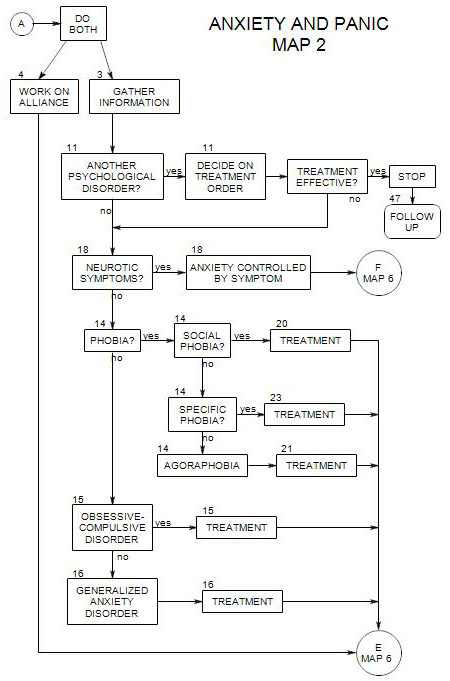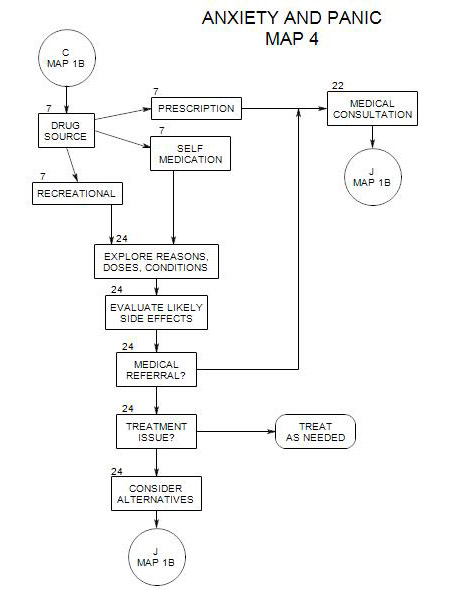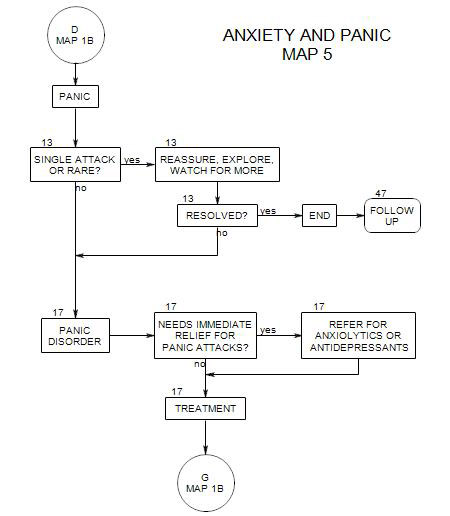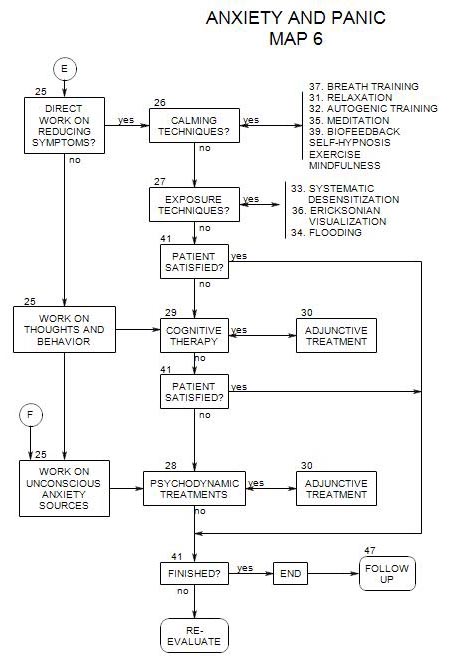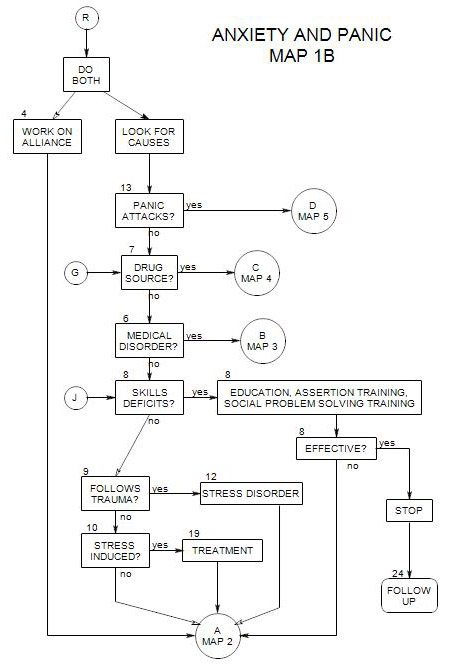
SECTIONS: 4 | 6 | 7 | 8 | 9 | 10 | 12 | 13 | 19 | 24
- First numbered section on the right side of Map 2
13a. Diagnosis
A panic attack is a brief and severe surge of anxiety. It comes on suddenly, often without warning. It is extremely intense. It may last for a minute or up to half an hour. The person feels alert and afraid. The heart rate increases. Breathing may become shallow and rapid. Other symptoms can include chest pains, sweating, choking, nausea numbness or tingling, dizziness, trembling, chills or hot flashes, and a sense of disconnectedness from the patient’s own body or the world. As a consequence, the patient may be overwhelmed and may feel as though he/she will go crazy or die.
A panic attack can occur without obvious antecedents, causes or context. It can also appear as a symptom of another disorder and never recur, especially if the other disorder is successfully treated.
If the person has had several panic attacks in a relatively short time [say, four in a month], then it is called a panic disorder [ Section 17 ] and should be treated more aggressively.
13b. Treatment after Single Attack
It is possible but unlikely that a person would come for treatment after a single panic attack. Should that happen, you can offer-
- information about panic attacks.
- curiosity about the circumstances under which it occurred.
- reassurance that it might not happen again.
In the meantime, you might be able to find out enough about the person to make a guess about his/her other issues, physical or psychological, of which this attack could be a symptom. That guess could lead you to consider further treatment, either for panic or for other psychological issues.
It is also possible that once the person begins to talk, he/she will remember other attacks, and you can begin to look for a pattern.
13c. Gather Additional Information
Ask about immediate antecedents that could set the stage for a panic attack, including-
- caffein use, in the form of coffee, soft drinks and other sources.
- alcohol or drug use and their long-term effects.
- cigarette smoking, which can lead to anxiety.
- sleep deprivation or loss.
- stress from a recent separation or loss of a loved one, possibly with a history of early childhood separation issues or school phobia.
These questions could be imbedded in a psychoeducational discussion of panic attacks, which has several goals:
- undermine any disaster hypothesis.
- normalize the process.
- acknowledge the perceived danger and sense of helplessness.
- create a treatment alliance based on working together to manage symptoms.
Ask about the perceived sources or causes of the attack. People need to explain their own experiences to themselves, and the patient’s explanation may have merit.
It is probably best not to dig too deeply regarding long-term antecedents, if this might lead the person to increased fear of another attack.
However, panic attacks often appear in the context of other anxiety disorders. It is possible that the person’s more serious issue is part of that context. You can ask about phobias, fears and anxieties. If he/she has none, that can be reassuring relative to future attacks. If the attack was a wake-up call regarding another disorder, treatment can focus on that.
Ask what the patient did in order to manage or react to the attack. If he/she went to the ER or a physician, ask what tests, if any, were done, and what the results were. This can help to rule out possible sources of the attack.
For more you can ask about panic attacks, see Panic Disorder, Section 17.
13d. Infrequent Attacks
If attacks are rare and the person doesn’t want to explore their causes or significance, and if the person doesn’t have an alcohol problem, then you might consider referring him/her for a short-acting benzodiazepine that could be taken as needed.
A brief theoretical discussion of panic could be helpful to some patients. Others might benefit from relaxation training or reassurance
13e. Treatment for a Series of Panic Attacks
When a series of panic attacks occur without the obvious presence of another disorder, then the person is diagnosed as having a panic disorder and treated as discussed in Section 17.
References: Wehrenberg, 2008
